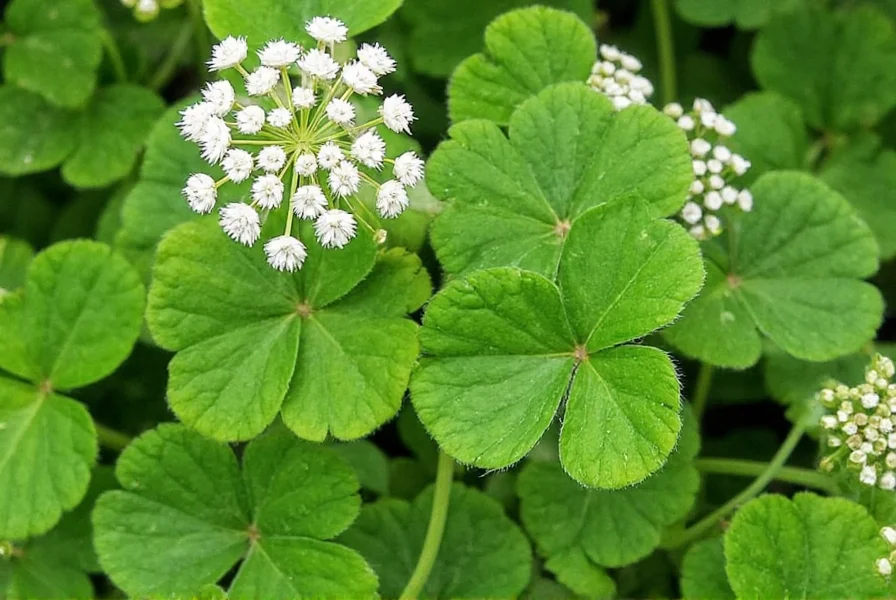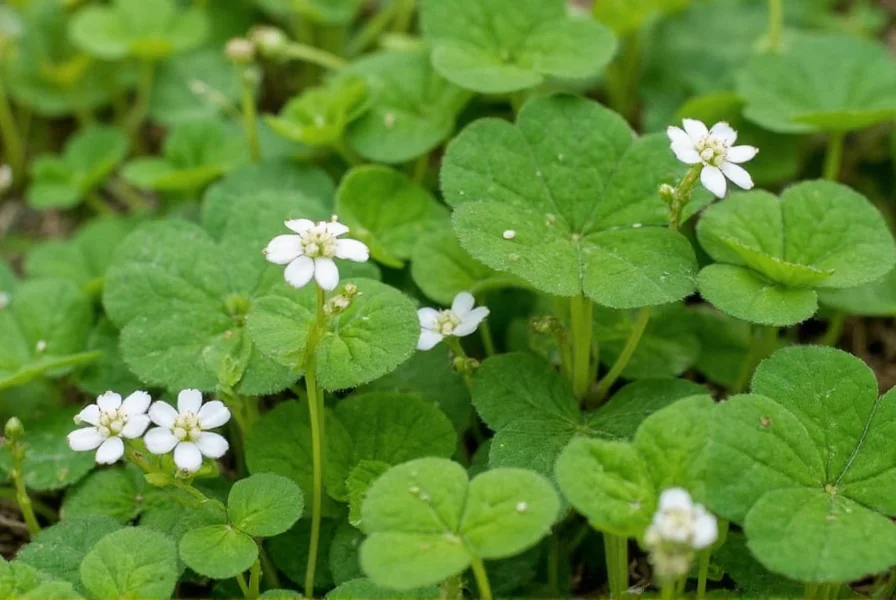For gardeners seeking sustainable landscaping solutions, white Dutch clover offers remarkable versatility. This resilient plant establishes quickly, requires minimal maintenance once established, and provides numerous ecological benefits that make it increasingly popular among environmentally conscious homeowners and agricultural professionals alike.
Botanical Characteristics and Identification
White Dutch clover stands out with several distinctive features that help with proper identification. The plant's trifoliate leaves—each leaflet bearing a pale crescent-shaped watermark—create its signature appearance. During blooming season (typically May through September), it produces dense, spherical flower heads ranging from pure white to light pink.
Unlike some aggressive ground covers, white Dutch clover maintains a modest height of 4-8 inches, making it ideal for low-maintenance lawns. Its creeping growth habit spreads through stolons (above-ground stems) that root at nodes, creating a dense mat that effectively suppresses weeds while remaining gentle on bare feet.
| Characteristic | White Dutch Clover | Microclover | hRed Clover |
|---|---|---|---|
| Height | 4-8 inches | 3-6 inches | 12-30 inches |
| Flower Color | White to pink | White | Red/purple |
| Leaf Size | Medium | Small | Large |
| Lifespan | Perennial | Perennial | Biennial |
| Nitrogen Fixation | High | High | Very High |
Benefits of White Dutch Clover for Soil Health
One of the most compelling reasons to incorporate white Dutch clover into your landscape is its exceptional ability to improve soil quality. As a legume, this plant hosts nitrogen-fixing bacteria in root nodules, converting atmospheric nitrogen into a form plants can use. This natural fertilization process reduces or eliminates the need for synthetic nitrogen applications.
Gardeners implementing white Dutch clover lawn benefits report noticeable improvements in soil structure within one growing season. The plant's extensive fibrous root system aerates compacted soils while increasing organic matter as roots decompose. When used as a cover crop, white Dutch clover prevents soil erosion during winter months while suppressing weeds through natural competition.
Optimal Growing Conditions for White Dutch Clover
Understanding white Dutch clover growing requirements ensures successful establishment. This adaptable plant performs well in USDA hardiness zones 3 through 10, tolerating temperatures as low as -40°F when established. While it prefers full sun, white Dutch clover demonstrates impressive shade tolerance compared to traditional turfgrass, making it suitable for partially shaded areas where grass struggles.
Soil preferences include well-drained loams with pH between 6.0 and 7.0, though it adapts to various soil types. Unlike many lawn alternatives, white Dutch clover requires minimal supplemental watering once established, typically needing just 1 inch of water per week during dry periods. This drought tolerance makes it an excellent choice for water-conscious landscaping.
Planting White Dutch Clover: Step-by-Step Guide
Learning how to plant white Dutch clover properly maximizes establishment success. The optimal planting window occurs in early spring (after last frost) or early fall (6-8 weeks before first frost), when soil temperatures reach 50-65°F. Follow these steps for best results:
- Prepare the soil by removing existing vegetation and lightly tilling to 1-2 inches depth
- Conduct a soil test and amend pH if necessary (ideal range 6.0-7.0)
- Seed at rate of 2-3 pounds per 1,000 square feet for new plantings
- Rake seeds lightly into soil (¼ inch depth) or use a seed spreader for even distribution
- Water gently but thoroughly to ensure good seed-to-soil contact
- Maintain consistent moisture until germination (7-15 days)
For overseeding existing lawns, mow short and rake to create seed-to-soil contact before seeding. Avoid using pre-emergent herbicides for at least 8 weeks after planting, as these prevent proper germination.
Maintenance Requirements for White Dutch Clover Lawns
White Dutch clover lawn care differs significantly from traditional turfgrass maintenance. Once established, this low-maintenance ground cover requires minimal intervention. Mowing frequency decreases substantially compared to conventional lawns—typically just once monthly at 3-4 inches height to prevent flowering if desired.
Fertilization needs remain low due to nitrogen fixation, though a light application of phosphorus-rich fertilizer in spring may boost establishment. During extended droughts, supplemental watering maintains green color, but the plant naturally goes dormant during severe dry periods and recovers when moisture returns. For homeowners seeking white Dutch clover lawn benefits without excessive maintenance, this plant delivers exceptional value.
Common Applications and Uses
The versatility of white Dutch clover explains its growing popularity across multiple applications. As a living mulch in vegetable gardens, it suppresses weeds while providing habitat for beneficial insects. In orchards and vineyards, it serves as an effective cover crop that improves soil health without competing aggressively with tree roots.
For residential landscapes, white Dutch clover lawn alternatives offer several advantages over traditional turfgrass, including reduced water usage, elimination of synthetic fertilizers, and increased pollinator habitat. Agricultural operations utilize it for erosion control on slopes, as a forage crop for livestock, and in crop rotation systems to replenish soil nitrogen.

Considerations and Potential Drawbacks
While white Dutch clover offers numerous benefits, certain considerations affect its suitability for specific applications. The plant's flowering period attracts bees, which may concern those with allergies or young children playing in the yard. Mowing before full bloom reduces this issue while maintaining the lawn's green appearance.
Compared to microclover varieties, standard white Dutch clover grows slightly taller and features larger leaves, which some homeowners find less aesthetically pleasing for formal lawns. In high-traffic areas, it may thin out more than traditional turfgrass, though it recovers well with proper care. Understanding white Dutch clover vs microclover differences helps determine which variety best suits your specific needs.
Seasonal Care Calendar
Implementing a seasonal care approach ensures optimal white Dutch clover performance throughout the year:
- Spring: Overseed thin areas, apply light phosphorus fertilizer if needed, monitor for pests
- Summer: Mow monthly to desired height, provide supplemental water during extended droughts
- Fall: Aerate if soil compaction occurs, overseed bare spots, apply potassium for winter hardiness
- Winter: Avoid heavy foot traffic on frozen plants, plan spring improvements
FAQs About White Dutch Clover
Does white Dutch clover attract bees?
Yes, white Dutch clover flowers attract bees and other pollinators during its blooming season from May through September. The plant produces nectar-rich flowers that provide excellent forage for honeybees and native pollinators. Mowing before flowers fully open reduces bee activity while maintaining the green lawn appearance.
How does white Dutch clover handle foot traffic?
White Dutch clover tolerates moderate foot traffic but may thin in high-traffic areas compared to traditional turfgrass. It recovers well from occasional use and maintains resilience better than many alternative ground covers. For pathways or play areas with heavy use, consider blending with turfgrass or using stepping stones through clover sections.
Can white Dutch clover grow in shade?
White Dutch clover performs best in full sun but demonstrates good shade tolerance compared to most turfgrasses. It grows well in partial shade (4-6 hours of direct sunlight daily) though flowering may decrease. In dense shade, consider alternative ground covers as growth will become sparse and leggy.
How long does white Dutch clover live?
As a perennial plant, white Dutch clover typically lives 2-3 years in lawn settings before needing overseeding. In agricultural applications or ideal conditions, it may persist 5+ years. Its self-seeding capability helps maintain coverage, though periodic overseeding (every 1-2 years) ensures dense, vigorous growth in high-quality lawns.
Does white Dutch clover require fertilizer?
White Dutch clover generally doesn't require nitrogen fertilizer due to its nitrogen-fixing ability. A soil test may indicate need for phosphorus or potassium amendments during establishment. Established plantings benefit from light potassium applications in fall to improve winter hardiness, but routine fertilization contradicts the low-input philosophy of using this sustainable ground cover.











 浙公网安备
33010002000092号
浙公网安备
33010002000092号 浙B2-20120091-4
浙B2-20120091-4